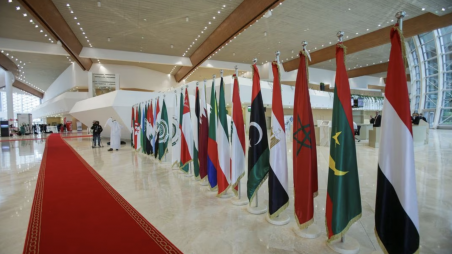Pan-Arabism: The quest for Arab unity
While the roots of Pan-Arabism date back to the late 1800s when Arab intellectuals started to push for a shared Arab identity; time and again the idea failed due to insurmountable differences

Throughout its history, Pan-Arabism, the idea of bringing all Arab nations and people together, and breaking the borders between countries, shaped Middle Eastern politics. The ideology has prodded at various revolutions, too.
In the 20th century, anti-colonial and nationalist movements swept across the Arab world. The ideology of Pan-Arabism animated many of these revolutions, particularly in the post-World War II period. The desire for political and economic independence, as well as the rejection of colonial legacies, were central themes in these movements. Notably, the Suez Crisis of 1956 and the Algerian War of Independence were deeply influenced by Pan-Arabism.
The roots of Pan-Arabism go way back to the late 1800s when Arab intellectuals started pushing for this shared Arab identity. This identity was grounded on linguistic, historical and cultural commonalities among Arab-speaking peoples. They baulked at the artificial colonial borders imposed by European powers in the aftermath of World War I.
First championed by Sharif Hussein ibn Ali, the leader of Mecca, in the early 20th century, the idea of Pan-Arabism snowballed when it found its early proponents, notably, Syrian intellectuals Sati al-Husri and Michel Aflaq, who further shaped the ideology.
Most prominently, the popularity of the idea spiked during the mid-20th century when Gamal Abdel Nasser, the charismatic Egyptian leader, advocated for Pan-Arabism to resist foreign domination and colonialism.
He sought Arab unity through political and economic cooperation. The formation of the Arab League in 1945 was a milestone, although it fell short of creating a single Arab state. In the late 1950s, the United Arab Republic (a short-lived union between Egypt and Syria) and the creation of the short-lived United Arab States exemplified attempts to unite Arab nations under one banner. However, these efforts were fraught with challenges, including differing political systems and leadership struggles.
At its peak, Pan-Arabism often went hand in hand with secularism and socialism. Leaders like Nasser were big on the idea of a secular state to bridge religious and sectarian gaps, emphasising a common Arab identity. They also adopted socialist economic policies to achieve self-sufficiency and reduce reliance on Western powers.
The rise and fall of Nasser can almost be seen as a barometer for the rise and fall of the Pan-Arabist ideology. Nasser served as Egypt's second President from 1956 to 1970. His charisma, eloquence and commitment to Pan-Arabism struck a chord with people throughout the region who aimed for a unified Arab front against foreign influence.
However, in the end, the Pan-Arabism dream did not succeed as planned due to internal divisions, regional conflicts and the rise of other identity-based movements. Over time, issues like the Arab Spring in the 21st century and sectarian conflicts further complicated the idea of Pan-Arab unity.
During the late 1950s, Nasser's leadership and his Pan-Arabist rhetoric reached their zenith. The formation of the United Arab Republic (UAR) in 1958, a union between Egypt and Syria, symbolised the desire for Arab unity. Nasser's actions, including the nationalisation of the Suez Canal, really geared up the Pan-Arabist vision and fueled the enthusiasm of the people.
However, the unity with Syria did not last long due to internal squabbles, and Nasser's attempts to unite with other Arab states faced resistance. Then, in 1967, the Six-Day War occurred, and Israel won'. This damaged Nasser's credibility and exposed the frailty of Pan-Arabist alliances.
Nasser's death in 1970 accelerated the decline of Pan-Arabism. His successors couldn't maintain the same influence and commitment to the Pan-Arabist cause. Meanwhile, the Arab world kept drifting apart along sectarian, political and regional lines – further eroding the unity that Pan-Arabism originally envisioned.
Even though it failed, the ideas and principles of common Arab identity, unity and resistance against foreign dominance still strike a chord in the Arab world, rarely and vaguely.



 Keep updated, follow The Business Standard's Google news channel
Keep updated, follow The Business Standard's Google news channel
















